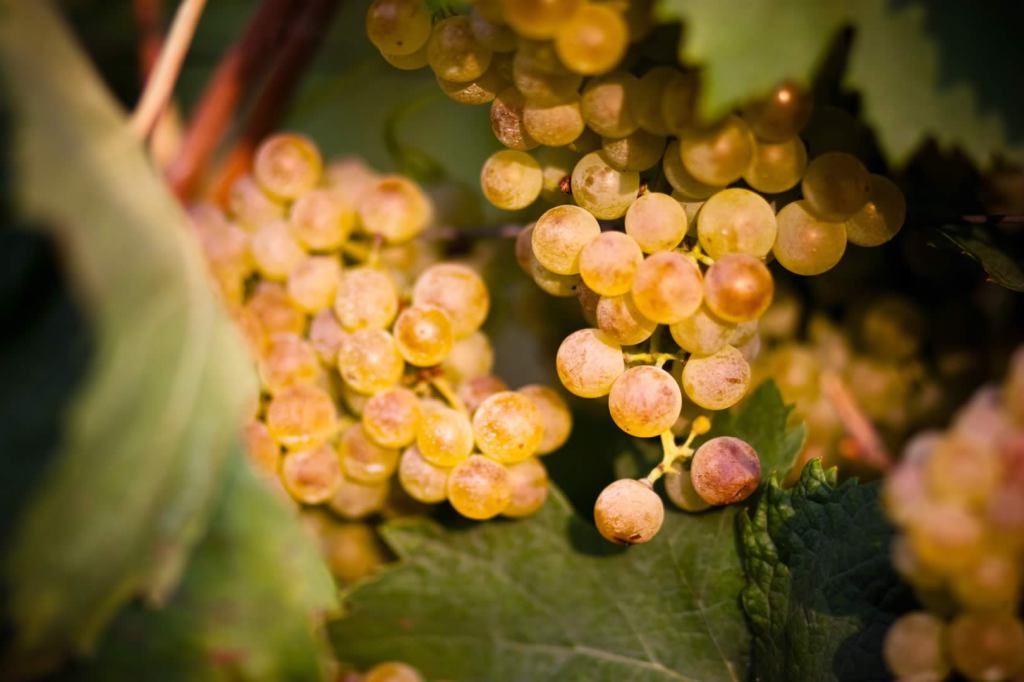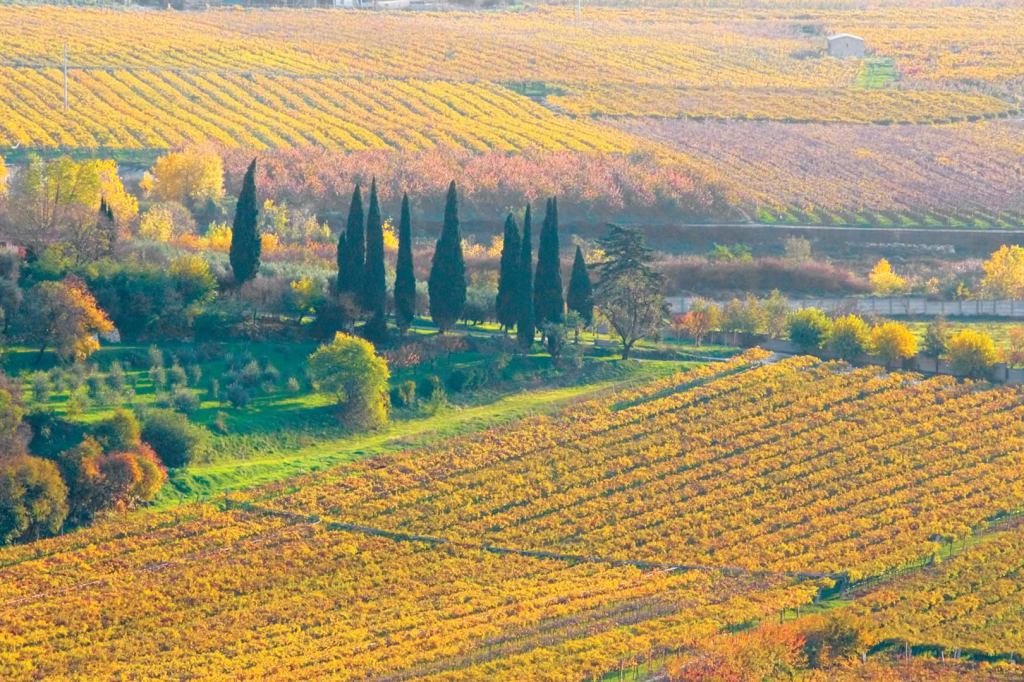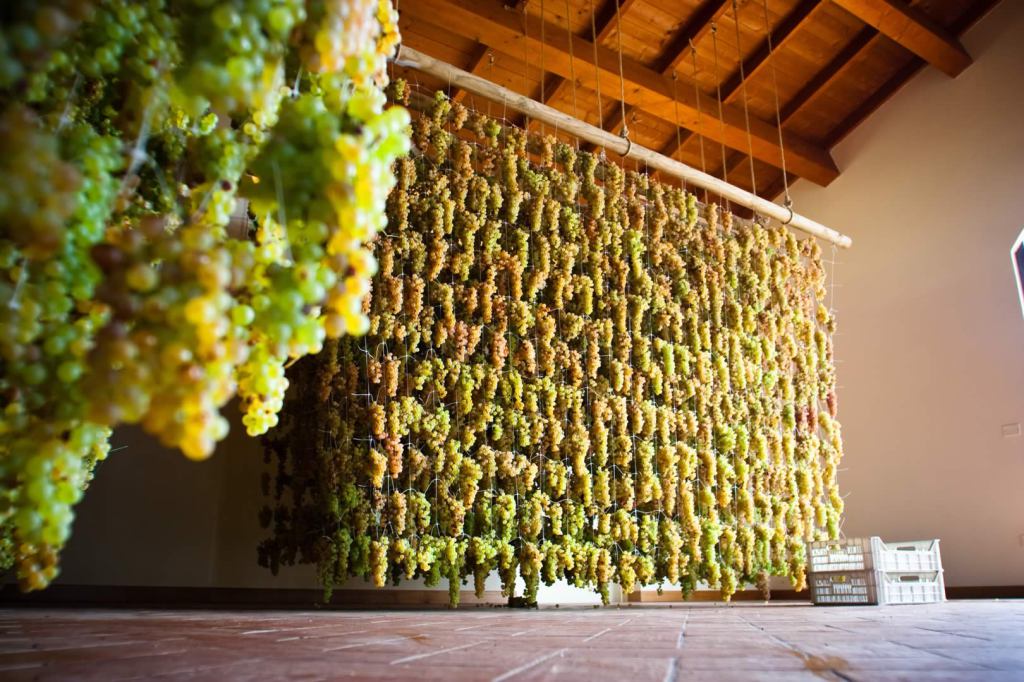 The name of a wine has never been so expressive of its enological personality and deepest identity as that of Soave: elegant, harmonious and supple. Evidence of wine-growing in the Soave area dates back to ancient times, and this famous wine has accompanied man through the millennia since earliest history. Historians who have tried over the centuries to explain the origins of the name "Soave" hold various and not always coinciding opinions: the most widely accepted explanation is that the beautiful Soave area took its name from the Suevians, a German people who came down into Italy with Alboin, the Longobard king. Many historical documents mention Soave and these wines were certainly greatly appreciated many centuries ago. However their fame especially developed in the early 20th century, when the larger Veronese wineries promoted Soave on all the national and foreign markets, and today this wine has earned the coveted description "Classico eminent Italian white wine" and the prestigious status as the most greatly exported Italian white wine.
The name of a wine has never been so expressive of its enological personality and deepest identity as that of Soave: elegant, harmonious and supple. Evidence of wine-growing in the Soave area dates back to ancient times, and this famous wine has accompanied man through the millennia since earliest history. Historians who have tried over the centuries to explain the origins of the name "Soave" hold various and not always coinciding opinions: the most widely accepted explanation is that the beautiful Soave area took its name from the Suevians, a German people who came down into Italy with Alboin, the Longobard king. Many historical documents mention Soave and these wines were certainly greatly appreciated many centuries ago. However their fame especially developed in the early 20th century, when the larger Veronese wineries promoted Soave on all the national and foreign markets, and today this wine has earned the coveted description "Classico eminent Italian white wine" and the prestigious status as the most greatly exported Italian white wine.
The Soave production zone is situated in the eastern part of the hills in the province of Verona (north of the "serenissima" highway, between the 18th and 25th kilometres of the VR-VE road). The zone includes part or all of the lands belonging to the municipalities of Soave, Monteforte, San Martino B.A., Lavagno, Mezzane, Caldiero, Colognola, Illasi, Cazzano, San Bonifacio, Roncà, Montecchia and S. Giovanni Ilarione.
An ideal symbiosis: environment and wine
 Garganega is the designation’s principal grape variety, and over the centuries it has found an ideal habitat here in the contours of the Alpone, Tramigna, Illasi and Mezzane valleys. The whole area enjoys a mild, temperate climate: the winters are not severe and the summers are not too hot. The use of the specification "Classico" with the designation "Soave" is reserved for the product made from grapes harvested and vinified in the municipalities of Soave and Monteforte d’Alpone, the oldest, original "classic" zone. Castles, churches, belltowers and luxurious aristocratic villas emerging from the sea of vineyards demonstrate the rich history and traditions of this area, closely linked to its principal product.
Garganega is the designation’s principal grape variety, and over the centuries it has found an ideal habitat here in the contours of the Alpone, Tramigna, Illasi and Mezzane valleys. The whole area enjoys a mild, temperate climate: the winters are not severe and the summers are not too hot. The use of the specification "Classico" with the designation "Soave" is reserved for the product made from grapes harvested and vinified in the municipalities of Soave and Monteforte d’Alpone, the oldest, original "classic" zone. Castles, churches, belltowers and luxurious aristocratic villas emerging from the sea of vineyards demonstrate the rich history and traditions of this area, closely linked to its principal product.
Back in 1931 Soave was already the most important Italian wine and was recognised as a "typical and prestigious" wine, and its identity was definitively protected by recognition of the controlled designation of origin in 1968.
If the production regulations for the new Soave Superiore DOCG are also brand new, those for Soave DOC (a denomination now 34 years old) have also undergone a careful restyling. A leading role is played by Soave Classico, which almost becomes a denomination in its own right, while for the hillside areas outside the historic zone, the name” Colli Scaligeri” has been coined.
The permitted grapes are the same as for the Soave Superiore DOCG, placing new emphasis just on the quality varieties and excluding Trebbiano Toscano which, before, had been allowed to constitute up to 15% of the blend.
For the styles of Soave which must come from hillside sites, the minimum level of alcohol has also been raised by half a per cent and the dry extract has been increased to 18 grams/litre. As from next year, there must be no less than 3,300 vines per hectare.
This, then, is a new challenge for Soave, which is thus re-positioning itself significantly with regard to other DOCs (particularly those of recent constitution) reclaiming its role. This challenge is based on new rules for the producers and greater clarity for the consumer.
Soave DOC
It’s designed to be drunk a year or two after the vintage. It is a user-friendly white, which offers good value for money: a wine from which one expects neither complexity nor ageing potential but rather a clean fragrance and an appealing freshness and delicacy. It is usually vinified in stainless steel, a method which allows the wine’s attractive floral and fruity notes to express themselves fully.
Soave Classico DOC
This is a more ambitious white, whose restricted production zone lies on the hills in the communes of Soave and Monteforte. The wine’s firm structure gives it an excellent ageing potential: it can continue to evolve for as much as ten years in good vintages from top producers. It often has a slight mineral note on the palate that adds complexity to its floral and fruity character.
When vinified and/or aged in wood, Soave develops a creamy undertone which mingles with the fruity and floral elements
Soave Spumante DOC
This sparkling wine with a modern and seductive taste, has managed to preserve a rich noble title containing a long, important and antique tradition. It is typically of the versatility of the Garganega, the grape of the excellency of the Soave wine, able to give character and identity to such a wine. Perfect grapes bunches, selected yeasts, accurated vinifications, a long staying on the lees, give a “Brut” with a fine and persistent "Perlage" as well as elegant and fragrant nose; a palate which shows harmonius style ideally to be served with “hors d’oeuvres” and for many moments of the party.
Soave Superiore DOCG
The production zone is limited to the hillside. Soave DOCG may be released on to the market only after 1st September of the year following the harvest and after bottle ageing of at least three months so as to emphasize characteristics of maturity and complexity.
From this style one expects the very best expression imaginable of Soave made in stainless steel: not only freshness and a very easy-drinking style, therefore, but also excellent ageing potential – as much as ten years in good vintages.
Its colour will become intense, while at the same time mantain the brilliance that a young white should display. Its aromas will also become deeper.
Recioto di Soave DOCG
In 1998 this was the first Veneto wine to obtain DOCG classification. In the Veronese dialect the word Recioto derives from recia, the upper part of the bunch of Garganega grapes which is richest in sugars and most greatly exposed to sunlight. Just before the harvest a selection is made of the best bunches which are laid out on racks to dry. The grapes are constantly supervised and cleaned for several months, until pressing.
Recioto di Soave has a complex profile and has become a great “vino da meditazione”. Recioto is traditionally served with tea biscuits but the ageing process also makes it suitable for blue and strong cheeses, fat liver and all foods which enhance its oiliness.
The wine is bright yellow in colour with acacia honey on the nose and floral hints, and a velvety, harmonious, full-bodied and pleasantly almondy bouquet.
This is an ideal wine for any happy occasion, whether celebrated alone or in company. Apart from the traditional still version, it is also available in the sparkling style, which makes an ideal foil for all the typical pastries of Veronese cuisine.
Garganega
Garganega is not markedly aromatic in nature, but displays a small range of perfumes of which almonds and white flowers are the most clearly identifiable. Its biological development is very long, so that it does not actually complete its ripening until October. Its skin is very tough and is a particularly deep yellow (verging on red) when ripe. It does not display especially high acidity but rather an inviting balance of extract and fruit sugars.
Trebbiano di Soave
Trebbiano di Soave has traditionally always been present in the vineyards, though it has gradually given way to the more exuberant Garganega. But in recent years it has shown itself to be the ideal partner in new enological profiles for the Soave of the future, its tangy liveliness blending with the typical structure and density of the Garganega variety.
